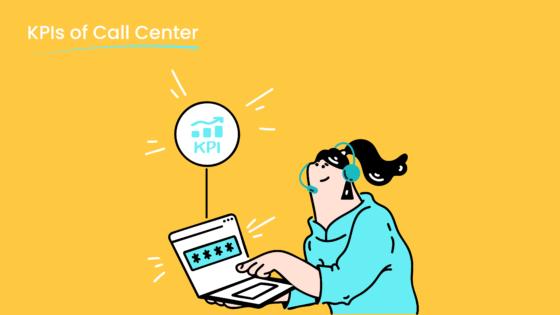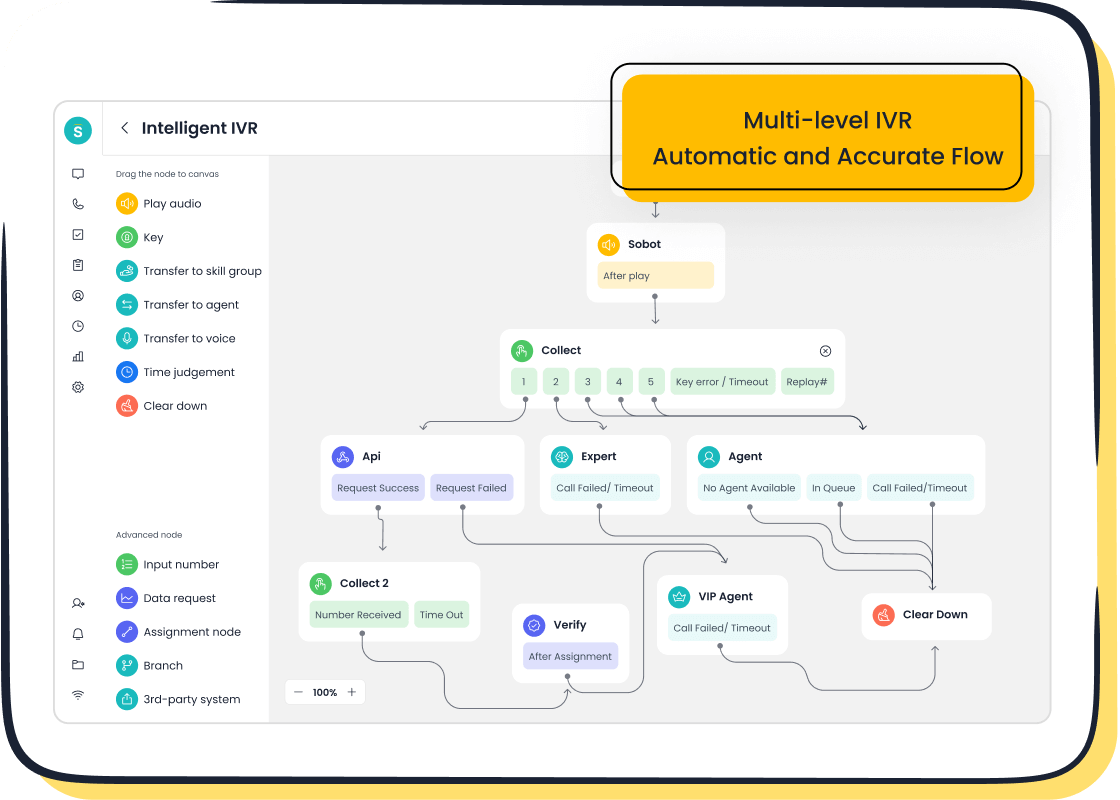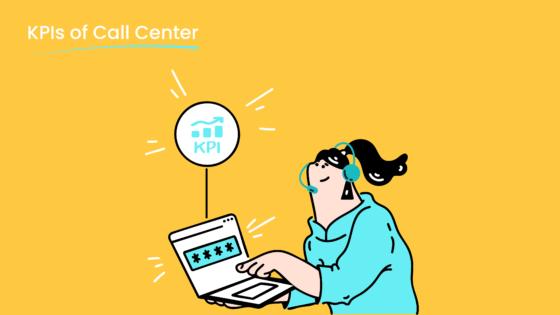Essential Skills for Handling Irate Clients Successfully

Dealing with irate clients can feel overwhelming, but mastering this skill is essential for any customer service representative. Why? Because your response can make or break the customer experience. Did you know that 65% of customers choose brands based on service quality? And 43% are likely to switch brands after just one bad experience. Learning how to handle irate clients not only helps you retain customers but also builds trust and loyalty. Companies like Sobot empower teams with tools to manage challenging interactions effectively, proving that even tough situations can lead to positive outcomes.
Understanding How to Handle Irate Clients
Common Triggers of Customer Frustration
When customers get frustrated, it’s often due to a few common issues. Long wait times, unclear communication, and ineffective solutions top the list. Imagine calling for help and waiting endlessly, only to receive an answer that doesn’t solve your problem. That’s bound to upset anyone! Support call transcripts reveal that customers frequently complain about delays, inaccurate information, and confusing product details. These frustrations can quickly escalate into anger if not addressed properly.
| Characteristic | Share of Respondents |
|---|---|
| Lack of effectiveness | 27% |
| Lack of speed | 12% |
| Lack of accuracy | 10% |
Understanding these triggers is the first step in learning how to handle irate clients. By identifying what’s causing the frustration, you can take proactive steps to improve the customer experience and build customer loyalty.
The Psychology Behind Anger in Customer Interactions
Anger often stems from unmet expectations. When customers feel let down, they may direct their frustration toward you or your company. Research shows that blame attribution plays a big role here. If customers believe the service provider is at fault, they expect clear explanations and solutions. Emotional responses like anger or frustration can also lead to behaviors like complaining or demanding immediate action.
| Key Findings | Description |
|---|---|
| Blame Attribution | Customers respond better to explanations from employees when they feel the company is at fault. |
| Emotional Responses | Negative emotions like anger often result in complaints or escalations. |
| Explanation Sources | The source and context of explanations impact how well they reduce anger. |
By understanding these psychological factors, you can approach angry customers with strategies that address their emotions and concerns effectively.
Why Empathy is Crucial in De-escalating Tense Situations
Empathy is your secret weapon when dealing with angry customers. It’s not just about saying, “I understand.” It’s about truly validating their feelings and showing you care. Studies highlight that empathetic listening can significantly reduce tension. For example, when healthcare providers engage empathetically, patients feel more connected and less aggressive. The same principle applies to customer service.
| Evidence Description | Impact of Empathy |
|---|---|
| Engaging empathetically while setting boundaries | Reduces aggression and preserves relationships. |
| Respectful communication and clear explanations | Improves satisfaction and builds trust. |
| Active listening validates concerns | Lowers the intensity of tense situations. |
When you show empathy, you’re not just solving a problem—you’re creating a positive customer experience that fosters trust and loyalty. This simple act can turn a heated moment into an opportunity to strengthen your relationship with the customer.
Proven Frameworks for Managing Irate Clients
The CARP Method (Control, Acknowledge, Refocus, Problem-Solve)
The CARP method is a practical framework that helps you navigate tense situations with irate clients. It’s all about taking control of the conversation, acknowledging the customer’s feelings, refocusing the discussion, and solving the problem. Here’s how it works:
- Control: Start by calming the situation. Use a steady tone and avoid interrupting. This shows the client you’re in charge and ready to help.
- Acknowledge: Let the customer know you understand their frustration. Say something like, “I can see why this would be upsetting.” Empathy goes a long way in easing tension.
- Refocus: Shift the conversation toward finding a solution. Ask questions like, “What can I do to make this right for you?” This keeps the discussion productive.
- Problem-Solve: Offer clear and actionable solutions. If you can’t resolve the issue immediately, suggest alternatives or next steps.
The CARP method works because it combines empathy with action. It helps you stay calm while guiding the client toward resolution. Try it the next time you face a challenging interaction.
Tip: Practice the CARP method during role-playing exercises with your team. This builds confidence and prepares you for real-life scenarios.
The HEAT Model (Hear, Empathize, Apologize, Take Action)
The HEAT model is another powerful tool for handling irate clients. It emphasizes listening, showing empathy, apologizing sincerely, and taking action to resolve the issue. Let’s break it down:
- Hear: Listen actively to the customer’s concerns. Avoid interrupting and let them vent. This shows respect and helps you understand the root of the problem.
- Empathize: Validate their feelings. Say something like, “I understand how frustrating this must be for you.” Empathy builds trust and calms emotions.
- Apologize: Offer a genuine apology, even if the issue wasn’t your fault. A simple “I’m sorry this happened” can make a big difference.
- Take Action: Provide a solution or explain the next steps clearly. Follow through on your promises to rebuild confidence in your customer support.
The HEAT model is especially effective when emotions are running high. It helps you connect with the client on a human level while addressing their concerns.

Note: Use the HEAT model alongside tools like Sobot’s Voice/Call Center to streamline communication and ensure quick resolutions.
Adapting Frameworks to Different Scenarios
No two customer interactions are the same. That’s why it’s important to adapt frameworks like CARP and HEAT to fit the situation. Here’s how you can tailor these methods:
- Dynamic Adaptation: Identify the core components of each framework and adjust them based on the client’s needs. For example, if a customer is upset about a delayed delivery, focus more on problem-solving than refocusing.
- Context Matters: Use tools like the EPIS framework to understand the context of the interaction. This helps you implement the right approach while ensuring sustainability in your customer support practices.
- Flexibility: Combine elements from both CARP and HEAT when necessary. For instance, you might start with HEAT’s “Hear” step and transition into CARP’s “Refocus” step for a smoother resolution.
Adapting frameworks ensures you’re prepared for any scenario. It allows you to provide personalized support that meets the customer’s expectations.
Pro Tip: Use Sobot’s AI-powered Voicebot to analyze customer sentiment in real-time. This helps you choose the best framework for each interaction.
Communication Skills for Calming Irate Clients

Active Listening Techniques to Show Understanding
Active listening is one of the most powerful tools you can use when dealing with angry customers. It’s not just about hearing their words but truly understanding their concerns. When customers feel heard, their frustration often decreases, and they become more open to finding a solution.
Here are some techniques to help you master active listening:
- Paraphrase their concerns: Repeat what the customer has said in your own words. For example, “So, if I understand correctly, you’re upset because the product didn’t arrive on time?” This shows you’re paying attention and ensures clarity.
- Use verbal nods: Simple phrases like “I see” or “That makes sense” encourage the customer to keep talking and feel validated.
- Ask clarifying questions: If something isn’t clear, ask for more details. For instance, “Can you tell me more about what happened when you tried to use the product?”
- Avoid interrupting: Let the customer finish speaking before you respond. Interrupting can make them feel dismissed.
Research supports the effectiveness of active listening. Studies show it builds trust, reduces misunderstandings, and improves customer satisfaction. Customers who feel valued are more likely to stay loyal to your brand.
Phrases to De-escalate Tension and Build Rapport
Words have the power to calm even the most irate clients. The right phrases can diffuse tension, build rapport, and turn a negative interaction into a positive customer experience. Here are some examples you can use:
- Validate their feelings: Say things like, “I understand why this situation is frustrating for you.” This acknowledgment helps customers feel their emotions are valid.
- Promote collaboration: Use phrases such as, “Let’s work on resolving this together.” This shifts the focus from the problem to the solution.
- Reassure them: Statements like, “I’m here to help you” or “We’ll get this sorted out” can provide comfort and reduce anxiety.
Acknowledging emotions is crucial. Phrases like these show empathy and encourage open dialogue, making customers feel heard and respected. This approach not only calms the situation but also strengthens the relationship between you and the customer.
How to Address Concerns Without Sounding Defensive
When handling customer complaints, it’s easy to fall into the trap of sounding defensive. However, a defensive tone can escalate the situation further. Instead, focus on addressing concerns with openness and empathy.
Here’s how you can do it:
- Use “I” statements: Instead of saying, “You misunderstood,” try, “I may not have explained that clearly.” This shifts the focus away from blame.
- Stay transparent: Be honest about what went wrong and what you’re doing to fix it. For example, “We experienced a delay in shipping due to high demand, but we’re working to ensure this doesn’t happen again.”
- Show emotional intelligence: Recognize the customer’s feelings and respond with understanding. For instance, “I can see how this situation would be upsetting.”
- Focus on solutions: Redirect the conversation toward resolving the issue. Ask, “What can I do to make this right for you?”
Research highlights the importance of open communication and emotional intelligence in reducing defensiveness. By framing discussions around solutions and showing empathy, you can de-escalate tension and rebuild trust.
| Technique | Description |
|---|---|
| Open Communication | Encourages transparency and dialogue with customers to address concerns. |
| Emotional Intelligence | Involves understanding and managing emotions to foster a supportive environment. |
| Conflict Resolution | Uses constructive strategies to resolve disagreements and reduce defensiveness. |
When you approach conversations with empathy and a focus on solutions, you not only resolve the issue but also leave a lasting positive impression on the customer.
Strategies for Handling Situations Without Immediate Solutions
The Role of Transparency and Honesty in Building Trust
When you don’t have an immediate solution, being transparent and honest can make all the difference. Customers value clear communication, especially during uncertain situations. If you’re upfront about challenges, they’re more likely to trust you and stay loyal to your brand. For example, if a product is delayed, let the customer know why and what steps you’re taking to resolve the issue. This openness shows you care about their experience.
Transparency doesn’t just build trust—it also strengthens relationships. It fosters loyalty and improves your brand’s reputation. Customers who feel deceived often leave negative reviews or take their business elsewhere. On the other hand, honesty encourages recommendations and creates a positive customer experience. Open communication also helps your team work more effectively, ensuring everyone has the information they need to explore solutions.

Tip: Use tools like Sobot’s Voice/Call Center to provide real-time updates and maintain transparency with your customers.
Offering Alternatives or Temporary Solutions
Sometimes, you can’t fix the problem right away. That’s okay! Offering alternatives or temporary solutions can still leave a good impression. For instance, if a product is out of stock, suggest a similar item or provide a discount for future purchases. These small gestures show you’re committed to helping, even when the ideal solution isn’t available.
Temporary fixes can also ease frustration. If a service is down, provide regular updates or offer a workaround. Customers appreciate the effort, even if it’s not a perfect solution. This approach keeps the conversation positive and demonstrates your willingness to go the extra mile.
Pro Tip: Use Sobot’s AI-powered Voicebot to suggest alternatives based on customer preferences, making the process faster and more personalized.
Managing Expectations While Maintaining Professionalism
Setting clear expectations is key to handling situations without immediate solutions. Be upfront about what you can and can’t do. For example, if resolving an issue will take time, let the customer know the timeline. This honesty helps manage their expectations and reduces frustration.
Exceeding expectations can also boost customer satisfaction. When you deliver more than promised, customers feel valued and are more likely to return. This not only enhances customer loyalty but also strengthens your brand’s reputation. Always maintain a professional tone, even in challenging conversations. A calm and respectful approach reassures customers and keeps the interaction productive.
Note: Sobot’s real-time monitoring tools can help you track progress and keep customers informed, ensuring a smooth and professional experience.
Maintaining Composure and Knowing When to Escalate

Tips for Staying Calm Under Pressure
Staying calm when a customer is upset can feel like a challenge, but it’s a skill you can develop. The key is to focus on managing your emotions before responding. Take a deep breath and give yourself a moment to assess the situation. This pause helps you avoid reacting impulsively and keeps the conversation productive.
Surrounding yourself with a supportive team also makes a difference. When you have colleagues who stay grounded under pressure, their calm energy can influence you. Another helpful tip is to remind yourself of the bigger picture. Not every issue is within your control, and that’s okay. Acknowledging this can help you respond with clarity instead of frustration.
Research shows that techniques like positive self-talk and relaxation exercises can improve your ability to handle stress. For example, saying to yourself, “I can handle this,” can shift your mindset and reduce tension. These small actions not only help you stay composed but also create a better experience for the customer.
Stress Management Techniques for Customer Service Professionals
Managing stress is essential for your well-being and job performance. Start by identifying what triggers your stress. Is it the volume of calls? Or maybe it’s the complexity of certain issues? Once you know the cause, you can explore solutions to address it.
Relaxation techniques like deep breathing or mindfulness exercises can help you reset during a busy day. Even a short break to stretch or walk around can make a big difference. Cognitive-behavioral strategies, such as reframing negative thoughts, are also effective. For instance, instead of thinking, “This customer is impossible,” try, “This is an opportunity to improve my problem-solving skills.”
Studies highlight that individual-focused stress management, like awareness training, reduces anxiety and improves job satisfaction. When you take care of your mental health, you’re better equipped to handle tough situations and provide excellent service.
When and How to Escalate or End a Conversation
Sometimes, despite your best efforts, a situation may require escalation. Knowing when to pass an issue to a higher tier of support is crucial. If a customer’s concern is beyond your authority or expertise, it’s time to involve a supervisor. Be transparent with the customer about why you’re escalating the issue. For example, you could say, “I want to make sure you get the best possible solution, so I’m connecting you with someone who can assist further.”
It’s also important to recognize when a conversation has reached its limit. If a customer becomes abusive or refuses to engage constructively, maintaining professionalism is key. Politely but firmly explain the boundaries. For instance, “I want to help, but I need us to keep this conversation respectful.”
Using tools like tiered support systems and sentiment analysis can help you decide when to escalate or conclude a conversation. Quick responses and clear communication ensure the customer feels heard, even if the issue isn’t resolved immediately.
Leveraging Sobot's Voice/Call Center for Effective Client Management
How Sobot's Intelligent IVR Enhances Customer Interactions

Sobot’s Intelligent IVR (Interactive Voice Response) system takes customer interactions to the next level. It allows you to customize greetings, create menus, and route calls to the right agents or teams in real time. This means your customers don’t have to deal with endless transfers or repeat their concerns multiple times. Instead, they get a seamless and efficient experience from the start.
For example, businesses using Sobot’s IVR have seen a 20% reduction in inbound discussion volume over two years. This streamlined approach not only saves time but also improves customer satisfaction. With features like drag-and-drop configuration, you can easily adapt the system to meet your needs. Whether it’s handling high call volumes or providing quick answers, Sobot’s IVR ensures every interaction feels smooth and professional.
Did you know? Companies using Sobot’s solutions have achieved a 96% positive feedback rate by enhancing their customer experience.
Using AI-Powered Voicebots to De-escalate Tense Situations

AI-powered voicebots are game-changers when it comes to calming frustrated customers. These bots use advanced sentiment analysis to detect emotions like frustration or confusion during calls. Once identified, they can either respond empathetically or alert a human agent to step in. This ensures that no customer feels ignored or misunderstood.
Imagine a customer calling about a delayed delivery. The voicebot picks up on their irritation and responds with, “I understand this delay is frustrating. Let me check on this for you.” This simple acknowledgment can instantly ease tension. Sobot’s voicebots also analyze tone and mood in real time, helping agents take proactive steps to prevent escalation. By combining empathy with technology, you can turn a potentially negative interaction into a positive one.
Real-Time Monitoring and Analysis for Improved Resolution Rates

Sobot’s real-time monitoring tools give you the power to resolve issues faster. By tracking metrics like Time to Resolution (TTR) and categorizing cases, you can identify bottlenecks and address them quickly. For instance, if a case requires input from multiple team members, the system flags it, ensuring it gets the attention it needs.
Here’s how real-time analysis makes a difference:
- It helps you respond promptly to customer inquiries.
- It highlights internal processes that may cause delays.
- It improves overall service quality by optimizing operations.
Businesses using Sobot’s tools have reported a 97% CSAT score and a 99% customer happiness rate. These numbers show how effective real-time insights can be in creating a better customer experience.
Handling irate clients doesn’t have to feel overwhelming. By mastering strategies like active listening, empathy, and proven frameworks such as CARP and HEAT, you can turn challenging interactions into opportunities to build trust and improve customer satisfaction. Did you know that 83% of consumers value good customer service as critical to their experience? When you practice these skills, you not only resolve issues but also boost customer retention and loyalty.
To make this process even smoother, tools like Sobot's Voice/Call Center can be a game-changer. With features like real-time monitoring and AI-powered voicebots, you’ll have the support you need to handle tough situations effectively. Start practicing today, and watch your confidence and professionalism grow!
FAQ
What should I do if a customer refuses to calm down?
Stay calm and professional. Let them vent while you listen actively. Use empathetic phrases like, "I understand how you feel." If the situation escalates, politely explain that you'll escalate the issue to someone who can help further.
Tip: Use Sobot’s real-time monitoring tools to track and manage escalations effectively.
How can I handle a customer complaint when I don’t have all the answers?
Be honest and transparent. Let the customer know you’re investigating the issue and provide a clear timeline for follow-up. Customers appreciate honesty more than vague responses.
Pro Tip: Sobot’s AI-powered Voicebot can assist by providing real-time updates or suggesting temporary solutions.
Can Sobot’s Voice/Call Center really help with angry customers?
Absolutely! Sobot’s Intelligent IVR and AI-powered Voicebots detect customer emotions and respond empathetically. They also route calls to the right agents, reducing frustration. These tools make handling irate clients smoother and more efficient.
What’s the best way to apologize to an angry customer?
Keep it genuine and simple. Say, “I’m sorry this happened. Let’s work together to fix it.” Avoid over-apologizing, as it might seem insincere. Focus on resolving the issue.
How does Sobot ensure customer satisfaction during high call volumes?
Sobot’s Intelligent IVR and bulk outbound task features streamline call management. They reduce wait times and ensure customers get quick, accurate responses. This keeps satisfaction levels high, even during peak periods.
Did you know? Businesses using Sobot report a 96% positive feedback rate!
See Also
Effective Strategies for Managing Live Chat Representatives
Top Practices for Ensuring Quality in Call Centers
Ten Strategies to Enhance Customer Satisfaction via Live Chat
Essential Principles of Quality Management Systems for Call Centers